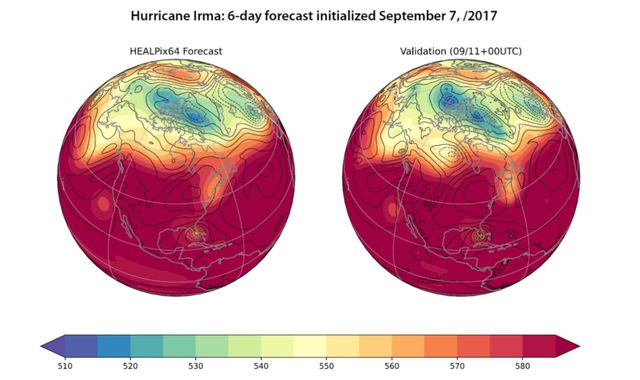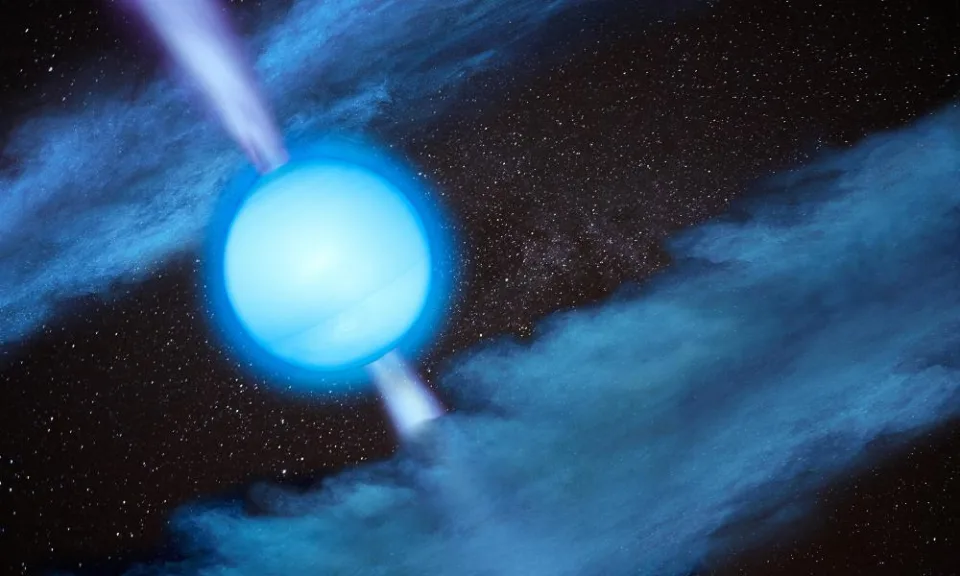To adapt to this new reality, more granular climate insights need to be generated to enable stakeholders to take a more data-driven approach to climate adaptation.
Because of the scale of this data and the complexity of climate phenomena, AI must be leveraged to support early warning systems and predictive models that are more accessible and optimize response times.
Despite climate mitigation efforts to keep global warming below 1.5°C, many experts expect the world to warm by 3.5°C by the turn of the next century. This warming world has brought floods and wildfires and caused massive loss of life, and more damage is expected in the coming decades.
Therefore, it is crucial to focus on large-scale climate adaptation and climate change mitigation. We must strengthen our ability to adapt to current and expected climate events, using actionable climate insights to inform decision-making. The use of artificial intelligence (AI) for its climate modeling capabilities is fundamental to this, but we are seeing more AI innovations focused on climate mitigation, such as using AI to measure and reduce emissions. This innovation gap needs to be addressed, and the development of responsible AI must be accelerated for actionable climate insights.
This means governments and businesses must fundamentally rethink their approaches to climate adaptation. AI is key, and a recent BCG survey of more than 1,000 public and private sector executives found that 87% see AI as an important tool to combat climate change.
Here’s how AI is key to climate adaptation:
Using artificial intelligence to build climate resilience
An estimated 330 to 3.6 billion people worldwide live in areas at high risk of climate change, where we have seen or will see a significant increase in natural disasters, and this is likely to increase as the climate crisis intensifies. This year’s extreme weather events, such as droughts, hurricanes, wildfires and floods, have shown us that adapting our societies to the dangers of climate change is a daunting task.
When modeling extreme weather events, a large number of variables must be included, and AI is well-suited to modeling this complexity because of its ability to collect, complete, and analyze large data sets. It can be used in early warning systems and long-term predictive modeling of local climate events, enabling stakeholders to take a more data-driven approach to climate adaptation.
For example, Destination Earth, led by the European Space Agency, aims to create an artificial intelligence-based model of Earth to monitor and predict interactions between climate phenomena, such as droughts and human activity. Once in place, global policymakers will have greater access to climate insights to inform their adaptation efforts.
The use of artificial intelligence for wildfire prediction and prevention is another good example. It enables interactive mapping of high-risk areas and the ability to track fire development in near real-time through fire spread algorithms to inform optimal resource allocation and long-term strategies for sustainable forest management. Since the global average annual cost of wildfires is around $50 billion, this should be welcome, as artificial intelligence can make fighting wildfires more efficient and cost-effective. To support this, the World Economic Forum has launched FireAid, which is working to build true AI models and pilot them in countries like Turkey.
These latest developments in climate adaptation using artificial intelligence have the potential to make climate insights more accessible to all stakeholders. Something the world needs, especially in the global South, which has less access to technology, and is also the most at-risk region. Therefore, AI has the potential to reduce the mismatch between adaptation needs and technology acquisition. To support this, more must be done to strengthen equitable access and participation in AI development to adapt to climate change.
AI enables business continuity in the face of climate risk
Climate change is poised to be a major business disruptor, with estimated potential financial impacts in the trillions of dollars for the U.S. economy alone. Companies will face major supply chain and production disruptions in the coming decades. Still, only 33 percent of business leaders incorporate climate risk into their business strategy.
AI can play an important role in predicting where these business disruptions are likely to occur, detailing operational vulnerabilities caused by climate change. By extracting complex data sources in a visual risk map, business leaders can understand how the complex dynamics of climate change are negatively impacting business assets and better withstand shocks.
For example, Esri, a leader in geographic information system (GIS) software, is using digital twins to model climate risk. A digital twin is a digital copy of an operation or physical asset. Using data and artificial intelligence, they can assess vulnerabilities in critical business assets, such as flood vulnerabilities, in near real-time. This allows weaknesses to be addressed and strengthened ahead of time, and preventive maintenance is carried out.
But, as with AI for government climate adaptation, corporate access to such AI tools requires critical assessment. Few organizations are taking full advantage of AI to adapt to climate change. More international cooperation is needed to continue developing these applications, as well as to gain access to this technology, so that actionable climate adaptation insights are accessible to all relevant stakeholders.
road ahead
These are two emerging central themes where AI can be used for climate adaptation. Many other promising applications are emerging and must be accelerated, such as the use of AI to address climate risk in financial products or the use of AI for pre-emptive humanitarian work.
Artificial intelligence for climate change adaptation is still in its infancy, and many efforts are using advanced data analytics. To responsibly harness the true potential of AI for climate adaptation, such as the use of synthetic data and predictive modeling, key hurdles must be addressed together.
Currently, the widespread use of AI in climate adaptation is constrained by data compatibility, access to existing and new AI and machine learning (ML) models, access to computing resources to run these complex models, and gain actionable insights and domain technologies Barriers such as expertise and management expertise to make appropriate policy decisions.
Fortunately, there is international will to collaborate on this work and close the innovation gap to accelerate the responsible use of AI for climate adaptation at scale and reduce the risk of maladaptation.
To that end, the World Economic Forum’s Artificial Intelligence and Machine Learning Platform is exploring what role the World Economic Forum can play in accelerating the use of artificial intelligence to combat climate change. This is supported by a consensus-based governance framework, toolkit and best practice use cases. It will showcase a data-driven artificial intelligence roadmap and climate modelling approach for public and private sector agencies to address the social, economic and environmental impacts of climate change.




GIPHY App Key not set. Please check settings